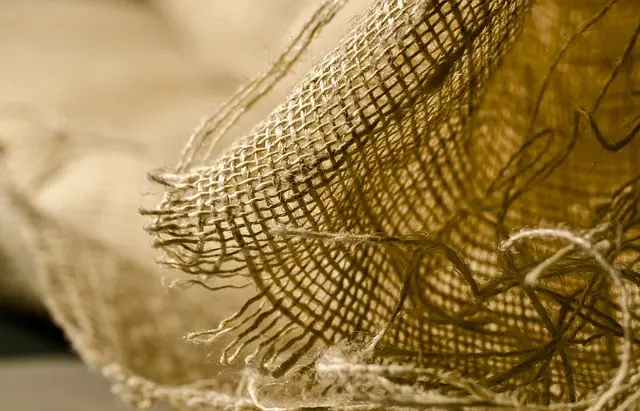Peripheral neuropathy, or nerve damage, affects millions, disrupting brain-body communication due to impaired nerve signal transmission. This condition can be caused by a variety of factors including physical injury, chronic diseases like diabetes, viral infections, poor diet, environmental toxins, and certain medications. Symptoms vary from person to person, with sensory neuropathy causing discomfort such as pain or numbness, motor neuropathy leading to muscle weakening or paralysis, and autonomic neuropathy impacting vital bodily functions. Treatment is personalized and may involve lifestyle changes, physical therapy, and medications targeting symptom relief and underlying causes. Kratom, an herbal supplement, has emerged as a promising option for pain management in peripheral neuropathy due to its active alkaloids like mitragynine and 7-hydroxymitragynine, which interact with brain opioid receptors to provide analgesic effects. While Kratom offers potential benefits without typical opioid side effects, it should be used under medical supervision due to regulatory status and possible interactions with other drugs. Additionally, addressing the root cause of neuropathy, adhering to a balanced diet, and preventing further injury are crucial for recovery. Rehabilitative therapies, including nerve stimulation, acupuncture, and targeted exercises, are instrumental in restoring nerve function and enhancing overall well-being. A holistic approach incorporates these therapies with Kratom for pain relief, omega-3 fatty acids, antioxidants, vitamins B and E, and stress management to create a comprehensive healing strategy for those with peripheral neuropathy.
Exploring the complexities of nerve damage recovery, this article delves into the multifaceted approaches available to heal and regenerate affected nerves. From understanding the root causes and symptoms to examining the integrative role of natural supplements like Kratom for pain relief, we explore a spectrum of treatments. We investigate holistic methods that complement medical interventions, including medications, therapies, and surgical options, while monitoring progress to refine recovery strategies. This comprehensive guide also addresses the science behind Kratom’s effects on pain management, patient experiences, expert medical opinions, legal usage considerations, and provides a wealth of resources for support throughout the healing journey. Join us as we navigate the path to understanding and overcoming nerve damage through informed, evidence-based practices.
- Understanding Nerve Damage: Causes, Symptoms, and Recovery Pathways
- The Role of Natural Supplements in Nerve Damage Recovery: A Closer Look at Kratom for Pain Relief
- Holistic Approaches to Facilitate Nerve Regeneration and Healing: Exercises, Diet, and Lifestyle Changes
Understanding Nerve Damage: Causes, Symptoms, and Recovery Pathways

Nerve damage, also known as peripheral neuropathy, occurs when there is an interruption or dysfunction in the way nerve signals are transmitted between the brain and the body. This can arise from a variety of causes, including physical injury, chronic diseases like diabetes or Lyme disease, viral infections, nutritional deficiencies, exposure to toxins, and even certain medications. Symptoms of nerve damage vary widely among individuals and depend on which type of nerve is affected: sensory nerves can cause pain, tingling, or a loss of sensation; motor nerves might lead to muscle weakness or paralysis; and autonomic nerves could disrupt functions like digestion, bladder control, and blood pressure.
The recovery journey for nerve damage is highly individualized and can depend on the underlying cause and severity of the damage. Treatment strategies often involve a combination of approaches, including lifestyle changes, physical therapy, and medication to manage symptoms and address any contributing factors. For pain management, natural options such as Kratom have gained attention due to its potential for pain relief without some of the side effects associated with traditional pain medications. Kratom contains alkaloids like mitragynine and 7-hydroxymitragynine, which are believed to interact with opioid receptors in the brain to provide analgesic effects. While its use should be approached with caution and under medical supervision due to regulatory status in various countries, it has been reported by some individuals as a helpful adjunct in managing chronic pain associated with nerve damage. It is crucial for those considering Kratom or any supplementary treatment to consult healthcare professionals to ensure safety and efficacy. Additionally, managing underlying conditions, maintaining a balanced diet, and avoiding further injury are essential components of the recovery pathway. Rehabilitative measures such as nerve stimulation therapies, acupuncture, and controlled exercise can also aid in restoring nerve function and improving quality of life for those affected by nerve damage.
The Role of Natural Supplements in Nerve Damage Recovery: A Closer Look at Kratom for Pain Relief

Nerve damage, often resulting from conditions such as diabetes or injuries, can lead to chronic pain and diminished quality of life. In the quest for relief and recovery, individuals are increasingly exploring natural supplements as a complementary approach alongside conventional treatments. Among these options, Kratom has garnered attention for its potential pain-relieving properties. Derived from the leaves of Mitragyna speciosa, a tropical evergreen tree native to Southeast Asia, Kratom contains alkaloids that may interact with opioid receptors in the brain, offering analgesic effects without the high potency associated with prescription opioids.
The role of Kratom for pain relief in nerve damage recovery is multifaceted. For instance, certain strains of Kratom are reported to have stimulating effects that can enhance mood and energy levels, which may indirectly aid in the healing process by improving circulation and reducing muscle tension that often accompanies nerve-related pain. Additionally, Kratom’s anti-inflammatory properties might contribute to a reduction in the swelling and irritation that can exacerbate neuropathic discomfort. While research into its efficacy and safety is ongoing, many users have anecdotally reported significant relief from chronic nerve pain when Kratom is used judiciously as part of a holistic treatment plan. However, it is crucial to consult healthcare professionals before incorporating Kratom into any treatment regimen due to potential interactions with other medications and its regulatory status varying by country.
Holistic Approaches to Facilitate Nerve Regeneration and Healing: Exercises, Diet, and Lifestyle Changes

Holistic approaches to nerve regeneration and healing encompass a multifaceted strategy that integrates exercises, dietary modifications, and lifestyle changes to promote optimal recovery. Physical therapies play a pivotal role in this process; they are designed to stimulate the affected nerves and muscles, improving function and facilitating the repair of damaged tissue. Tailored exercise routines can help maintain muscle strength and joint flexibility, which are crucial for overall well-being and nerve health. Additionally, these exercises can enhance blood circulation, which is essential for delivering nutrients and oxygen to support nerve healing.
In parallel with physical therapies, diet also has a significant impact on the body’s ability to regenerate nerves. A balanced diet rich in omega-3 fatty acids, antioxidants, and vitamins that are B and E vitamins can provide the building blocks for cell repair. Antioxidants, in particular, can protect nerve cells from oxidative stress, which is often associated with conditions leading to nerve damage. Beyond nutrition, lifestyle changes such as managing stress through mindfulness practices, ensuring adequate sleep, and avoiding harmful substances are equally important. In this context, natural supplements like Kratom have gained attention for their potential analgesic properties, which may aid in pain relief without the side effects commonly associated with pharmaceutical options. This holistic combination of physical activity, nutritional adjustments, and lifestyle modifications can create a conducive environment for nerve regeneration and healing, ultimately contributing to a more comprehensive recovery process.
Recovering from nerve damage is a multifaceted process that involves understanding its origins, recognizing its symptoms, and engaging in targeted recovery pathways. This article has explored the various causes and symptoms of nerve damage, delved into the potential of natural supplements like Kratom for pain relief as part of the recovery journey, and examined holistic approaches that promote nerve regeneration through exercise, dietary adjustments, and lifestyle changes. While each individual’s experience with nerve damage is unique, the insights provided here aim to offer a comprehensive guide to those seeking to restore their nervous system’s functionality and alleviate pain. By integrating medical advice with natural remedies and adopting a holistic approach, individuals can embark on a path to recovery tailored to their specific needs.






